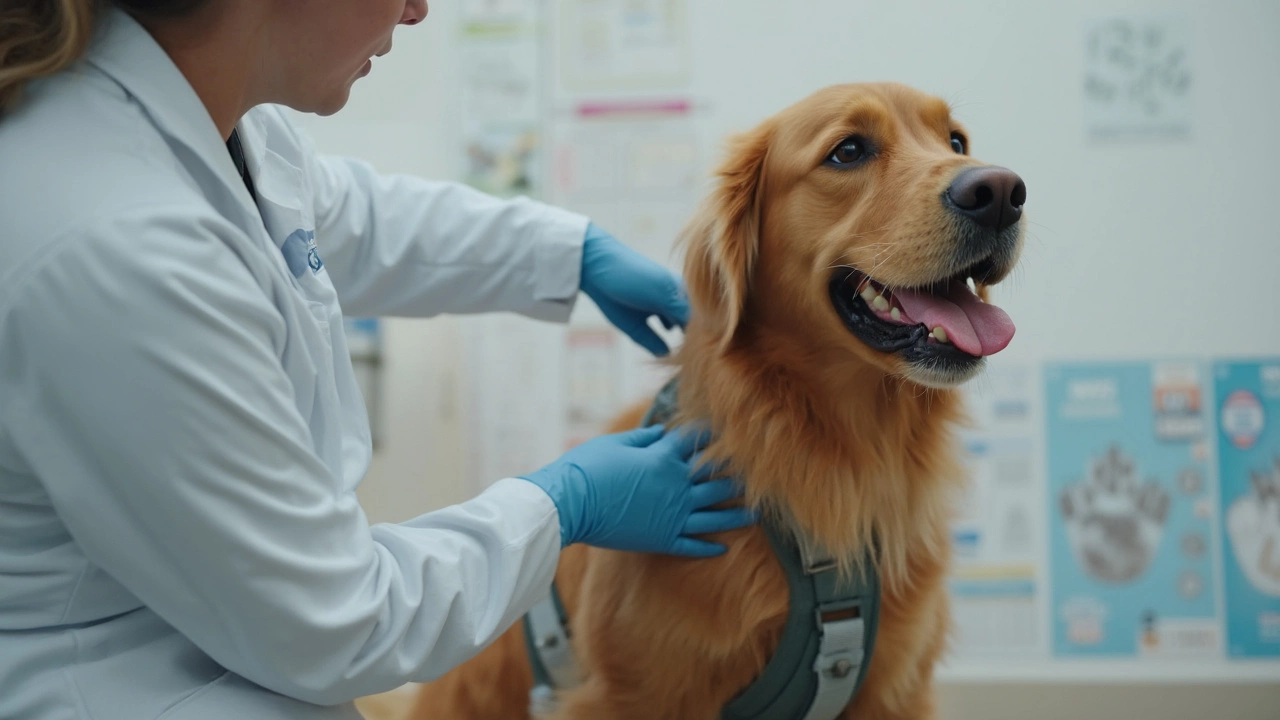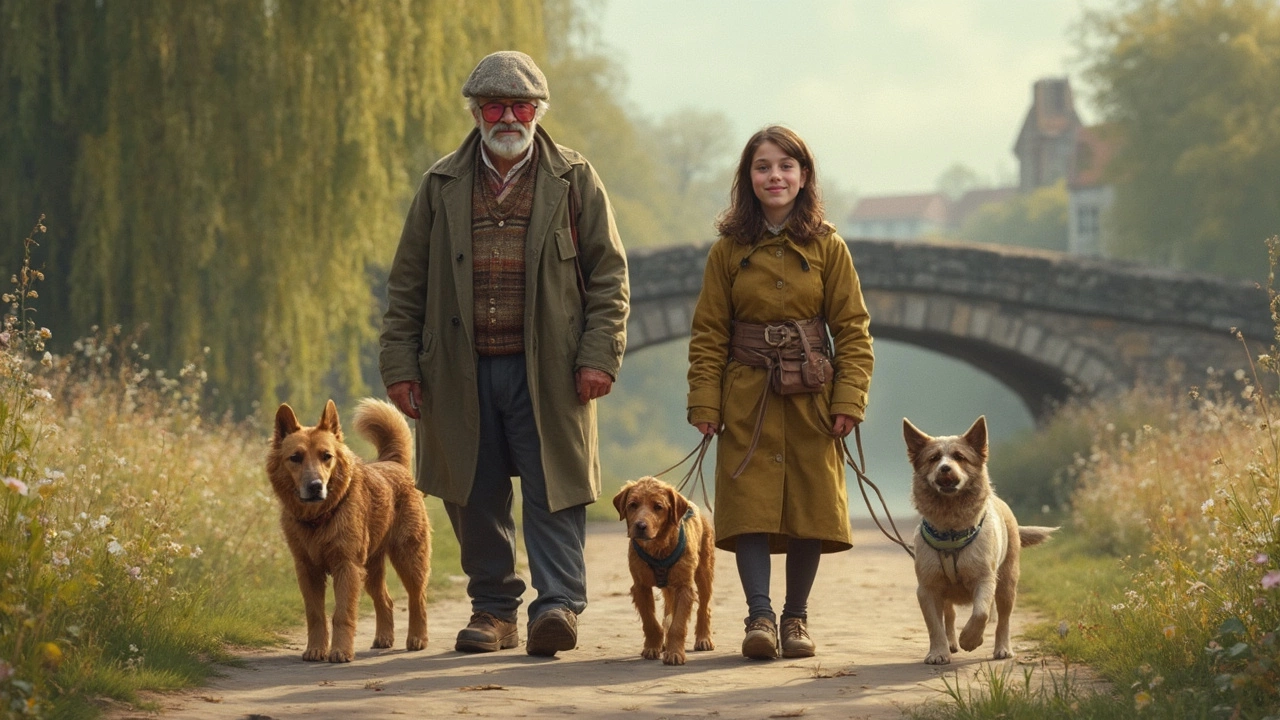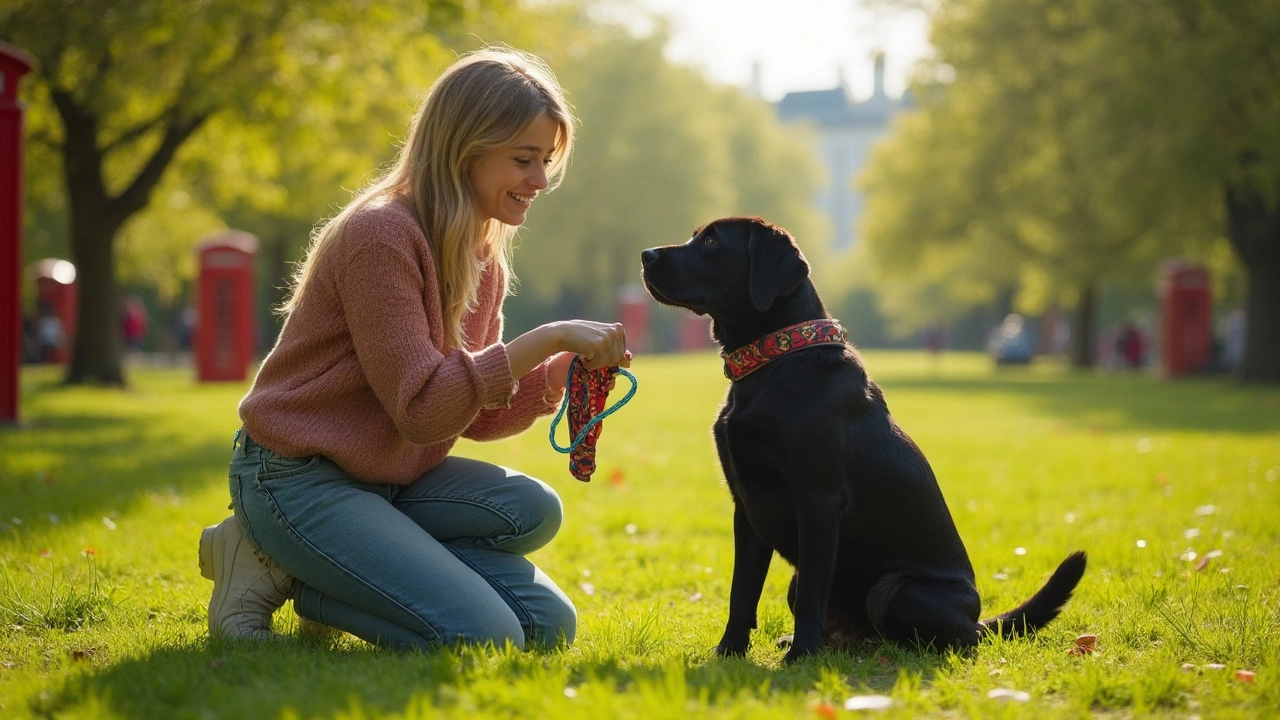Ask a group of dog owners what works best for walking their pup—a collar or a harness—and you’ll get a passionate debate. The thing is, plenty of us just do what we’ve always done or grab what looks cute at the pet store. But here’s the crazy part: according to a 2024 survey by the American Veterinary Medical Association, over 60% of owners have no idea which option is safer for their dog. Some folks only talk to the cashier, not the vet. There’s a world of difference between grabbing gear on instinct and making a choice that fits your dog’s needs, health, and comfort. Ever wondered if your dog even likes that new harness you found on TikTok? Or whether switching could help with pulling, choking, or general mood? Let's get into the facts, from the experts who examine and treat dogs every single day.
What Vets Look For When Choosing Collars or Harnesses
Vets aren’t just thinking about fashion statements when you ask about collars or harnesses. They care about how equipment affects your dog’s health, day-to-day comfort, safety on busy streets, and even long-term heart and breathing health. Some dogs, especially small breeds like Yorkies and Chihuahuas, have windpipes so sensitive that one strong tug on a collar can cause a cough or—in rare cases—permanent injury. Vets like Dr. Laura McCaffrey in Austin point out that flat collars work well for ID tags and quick trips, but she routinely tells clients with smaller or brachycephalic breeds (think Pug or Bulldog) to go for a well-fitted harness. She’s seen too many dogs develop chronic coughs or tracheal collapse simply from routine walks with a basic collar.
For highly energetic, strong dogs—the Huskies, Shepherds, or that one Golden Retriever who thinks every squirrel is an Olympic challenge—harnesses do more than help with control. They distribute force over the chest and shoulders, taking the stress off the neck and spine. And if your dog tends to lunge, harnesses make life easier for both of you. Vets worry less about neck injury, especially with front-clip designs. But they’re honest about harness downsides: cheap, ill-fitting harnesses can cause rubbing, mat fur, or interfere with natural movement if you don’t take time to adjust everything.
For adult dogs without health or behavioral concerns, a strong, adjustable collar isn’t usually a problem for short periods—like potty breaks, supervised yard sessions, or quick errands. But when walking further or dealing with pulling, most vets lean toward harnesses. Age and breed play a role: older dogs with arthritis might hobble less painfully in a harness, while big, docile dogs often do just fine with a collar. It's about knowing your dog's unique body, temperament, and daily life, not just trends or marketing.
Health and Behavioral Facts: Collars vs Harnesses
Here’s a detail that surprises a lot of owners: many common collar injuries happen to puppies whose owners don’t even realize there’s an issue. Young dogs love to dart, twist, and jerk—one snap and their fragile neck is at risk. In a 2023 Columbia University study, vets found that nearly 1 in 4 of collar-wearing puppies developed at least minor throat injuries from pulling or rough play. It’s not scary unless nobody’s paying attention, but it explains why puppy school trainers and vets almost always recommend a soft, well-fitted harness for under-1-year-olds.
Dogs with flat faces—the French Bulldogs, Pugs, Boston Terriers—have more reason than most breeds to avoid pressure on the throat. They already struggle to breathe sometimes. Anything restricting airflow doesn’t just make walks uncomfortable, it can actually cause temporary fainting or full-on collapse. Vets have seen it happen. Harnesses don’t solve every problem—too much pressure around the shoulders or chest can mess with how your dog moves, especially if you leave it on too tight or too long in the heat—but they’re much safer for these breeds.
But what about pulling? Collars make it easier to give a quick correction, but that “correction” might do more harm than good. Traditional leash jerks don’t just fail to teach most dogs—they spark protest, tension, or even reversal (your dog pulls harder). Harnesses, especially “no-pull” models with chest rings, make quick control easier and much less stressful on both the dog and your arm. Many trainers and vets now team up to recommend front-clip harnesses for “power pullers” because they physically turn the dog back toward you. That redirection cuts choke risk and makes walks calmer. Of course, there’s always that one escape artist who can wriggle out of anything. Talk to your vet or a knowledgeable pet store worker for breeds known for Houdini-level stunts.

Different Gear for Different Situations: When to Use Which
If you picture the classic collar as “dog ID card holder and backyard buddy,” you’re on the right track. Vets almost always say, if your dog is chilling at home or in the yard with you, a collar with an ID tag is enough. But here’s a detail a lot of owners don’t know: collars should have a quick-release or breakaway feature. This keeps playful dogs from catching the collar on furniture, fences, or dog buddies. You’d be shocked at how many ER vet visits happen from stuck or tangled collars—no one expects it, but it’s an easy fix.
When it’s time for an adventure—parks, trails, walks down Main Street—a harness gives your dog (and you) more control and less chance of injury. This is especially true for puppies, seniors, dogs prone to collapsing trachea, or those who’ve had neck or spinal surgery. But even for adventure dogs who pull, a harness gives your shoulders and wrists a break. While working breeds or trained adult dogs might handle a collar just fine, the harness wins for safety and control for almost every other situation.
There are still moments when a collar works best. For quick house-leash training (like teaching your dog to stop darting at the front door) or emergency recalls, some trainers like using a lightweight, flat collar. And if you have a secure backyard, a collar for ID is a must-have. The point is: it’s not either-or, but matching the tool to the task.
Hot tip: for travel, like road trips or airline adventures, some harnesses double as car safety restraints. Vets recommend crash-tested brands like Sleepypod or Ruffwear for maximum security in the car. Don't bother with those cheap “seatbelt” clips on regular harnesses—they aren’t built for accidents.
How to Fit Collars and Harnesses Like a Pro
Getting the right gear is one thing, but fitting it right is where most people mess up. You want the collar or harness to fit snugly, but not tight. A good rule: if you can squeeze two fingers between the collar/harness and your dog’s skin, you’re probably set. More room and your dog might wiggle out. Less, and you’ll create chafing or breathing issues.
Check for the “big three” problem spots: neck (behind the ears), armpits, and chest (especially for harnesses). If you find lost fur, red marks, or if your dog suddenly stops enjoying walks, check the fit first before panicking about health. For most collars, the width should match the size of your dog’s neck. Wider for big breeds, thinner for petites. Try using soft tape or an old string to get a good neck measure, then check the manufacturer’s guide. Adjust for comfort after a fresh grooming, too—too loose when fluffy means too tight when trimmed.
For harnesses, go slow introducing it. Let your dog sniff the new gear, offer treats, and fit it off-leash before your first adventure. Watch for twisted straps or pinched skin under “Y” or “H” style harnesses. Moves like high-fives or spins should be easy and comfortable—no resistance, no limping. If the harness slips sideways or leaves fur ruffled after a walk, refit it or try a different size/model. For escape-artist breeds, try harnesses with double fasteners or “anti-pull” designs that cinch gently if your dog tries to back out.
Some tips the pros use: shave or trim excess matting near harness pressure points (especially in doodles or poodles), wash gear regularly so it doesn’t get gunky or stiff, and try different models until your dog struts around like a champ. Don’t stress if it takes a few tries—dogs are like us, sometimes picky about their wardrobe.

Real Stories and Latest Vet Advice: Choosing What’s Right for Your Dog
There’s no “one gear fits all dogs” answer, even for vets. Take Daisy, a ten-pound Maltipoo in New Jersey. Her vet urges a soft mesh harness for daily walks; she started coughing every time her owner used a collar on busy streets. Then there’s Max, a calm older Golden, who’s worn the same leather collar for five years—his vet says it fits great, he never pulls, and the family just adds a harness for rougher hikes. A new Cornell veterinary research review from late 2024 suggests that collars are perfectly fine for calm, healthy, well-trained dogs, but harnesses win on safety for rambunctious, young, small, or senior dogs—and for any dog prone to lunging or health concerns.
Modern-day harnesses are nothing like the stiff, awkward gear from 20 years ago. Many now come with quick-drying fabric, reflective trim for night walks, and ergonomic padding that fits every curve of your dog’s chest. There are even smart harnesses with GPS, but vets say good fit and structure matter more than gadgets. If you’re shopping, skip the cheapest options and invest in one that’s tough, washable, and designed for your dog’s activity level. Don’t be swayed by color or brand hype—function first, style second.
Here’s what respected vet tech Anna Robinson told me for this article: “Listen to your dog. A harness that leaves marks, a collar your dog scratches at constantly—your pup will tell you if it’s wrong.” Look for nonverbal signs: slowing down, excessive licking of the chest or neck, or sudden dislike for walk time. Your vet can always check the fit and recommend brands based on your dog’s build. And remember, keeping both a collar (for ID) and a well-fitted harness (for outings) covers all your bases. It’s not a luxury for some dogs—it’s the best way to stay safe, comfortable, and ready for anything.
So next time you tighten the collar or buckle the harness, know that you’re not just following fads. You’re making a decision that shapes your dog’s health and happiness for years to come. And if you’re unsure? The best “pro tip” is real-world advice from your vet or a dog-savvy friend—not the latest social media trend.

